Aquatic plants are remarkable for their ability to thrive in environments where few others can. These plants not only add beauty to underwater landscapes but also play vital roles in maintaining the balance and health of aquatic ecosystems. Whether you’re an aquarium enthusiast or simply curious about the wonders of nature, understanding these unique plants offers a glimpse into the incredible adaptability of life beneath the water’s surface. In this article, we’ll explore the top 10 most unique aquatic plants that flourish underwater, highlighting their distinctive features and why they stand out in the fascinating world of aquatic flora.
Muskgrass (Chara spp.)
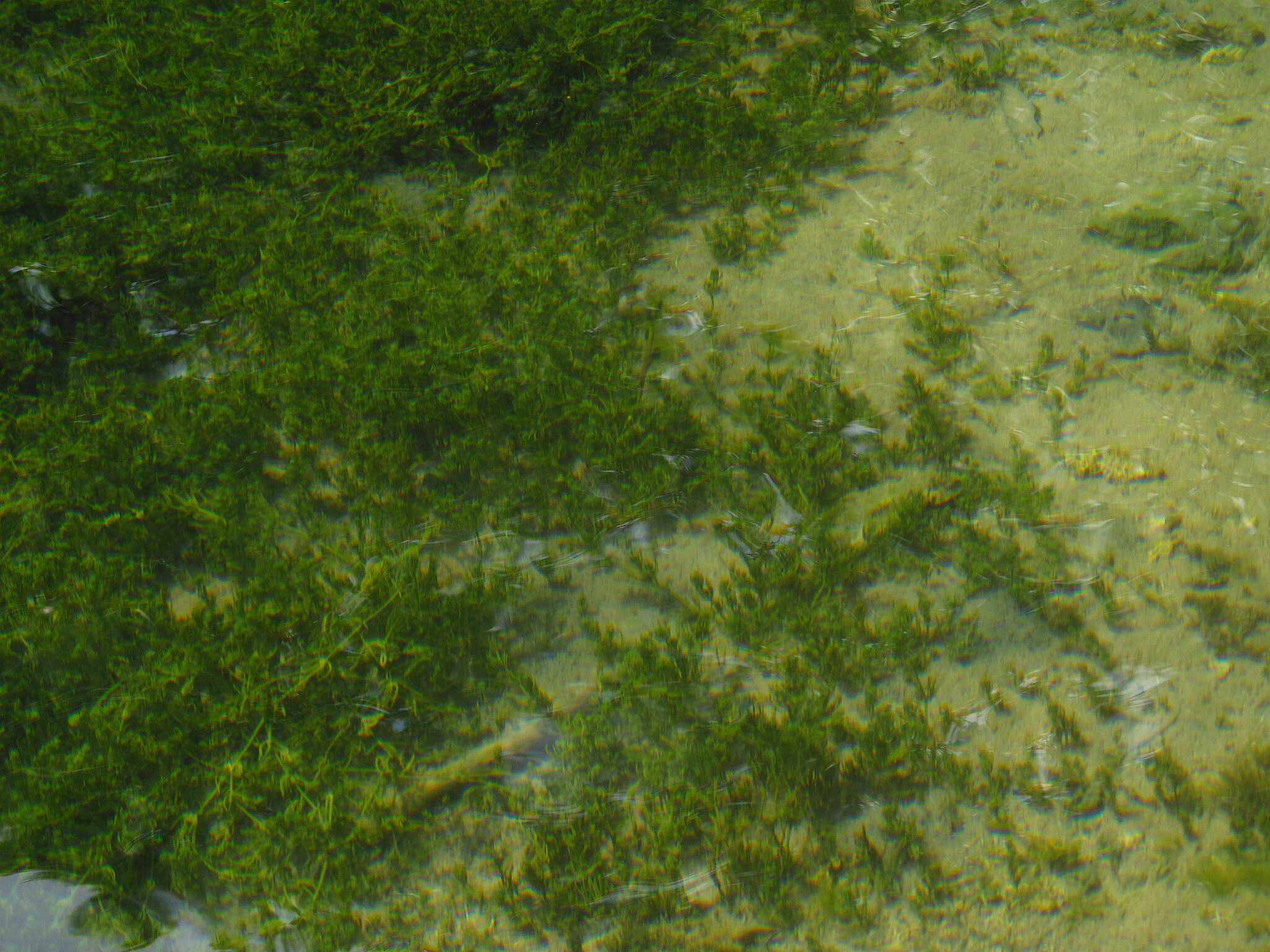
Muskgrass, belonging to the genus Chara, is a type of macroalgae that flourishes in nutrient-rich freshwater environments such as ponds and lakes. Unlike typical algae, Muskgrass has a complex structure that resembles vascular plants, with stem-like and leaf-like features. This distinctive plant is often mistaken for higher plants due to its intricate morphology, including its tough, ridged stems that can grow up to 1 meter long. Muskgrass is particularly valued for its role in aquatic ecosystems, where it provides essential habitat and food for invertebrates, fish, and amphibians. Its dense growth helps stabilize the sediment, reducing water turbidity, and its ability to absorb nutrients makes it an excellent natural filter, preventing harmful algal blooms. One of the most unique aspects of Muskgrass is its strong, garlic-like odor, which is emitted when the plant is disturbed. This characteristic smell, along with its resilience in low-light conditions and poor-quality water, makes Muskgrass a fascinating and vital component of freshwater ecosystems. Despite its importance, Muskgrass often goes unnoticed, overshadowed by more prominent aquatic plants, making it a truly unique yet underappreciated species that plays a crucial role in maintaining water quality and biodiversity.
Kelp (Laminariales)
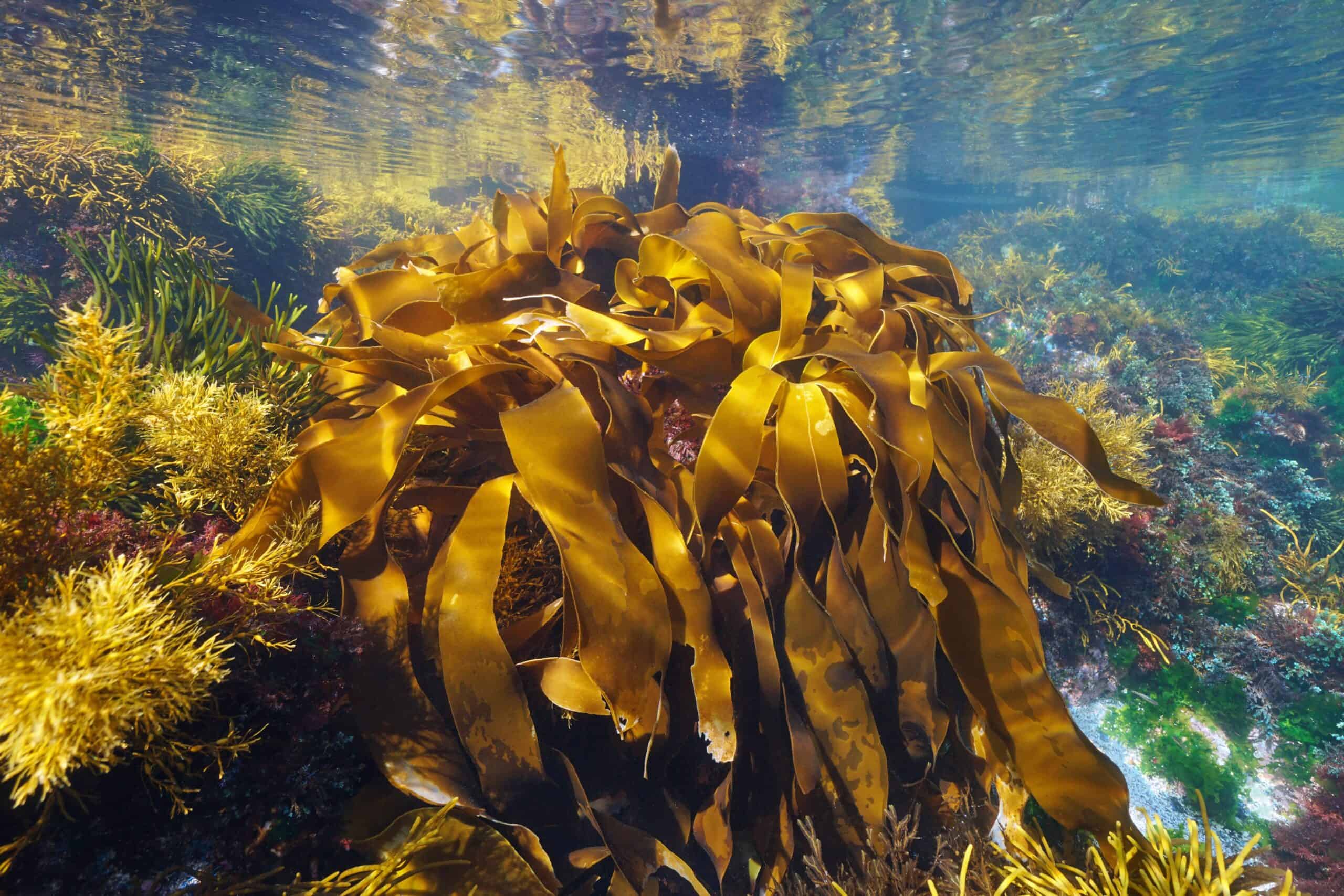
Kelp is a large brown alga that forms expansive underwater forests in shallow, nutrient-rich coastal waters, primarily in the northern hemisphere. These underwater forests are some of the most productive ecosystems on Earth, providing habitat, food, and protection for a vast array of marine species, from invertebrates to large marine mammals like sea otters and whales. Kelp is known for its remarkable growth rate; certain species, such as Giant Kelp (Macrocystis pyrifera), can grow up to 18 inches per day, reaching lengths of up to 200 feet. This rapid growth and the towering structures it creates make kelp forests vital carbon sinks, playing a significant role in sequestering carbon dioxide and helping to mitigate climate change. Kelp also has a unique holdfast system that anchors it to the ocean floor, allowing it to withstand strong currents and wave action. The versatility of kelp is further highlighted by its ability to thrive in different marine environments, from temperate to polar regions. Its contribution to marine biodiversity, coupled with its environmental benefits, makes kelp one of the most unique and ecologically important aquatic plants in the world. The loss of kelp forests due to climate change and overfishing poses a significant threat to marine ecosystems, underscoring the need for their conservation.
Mangroves (Rhizophora spp.)
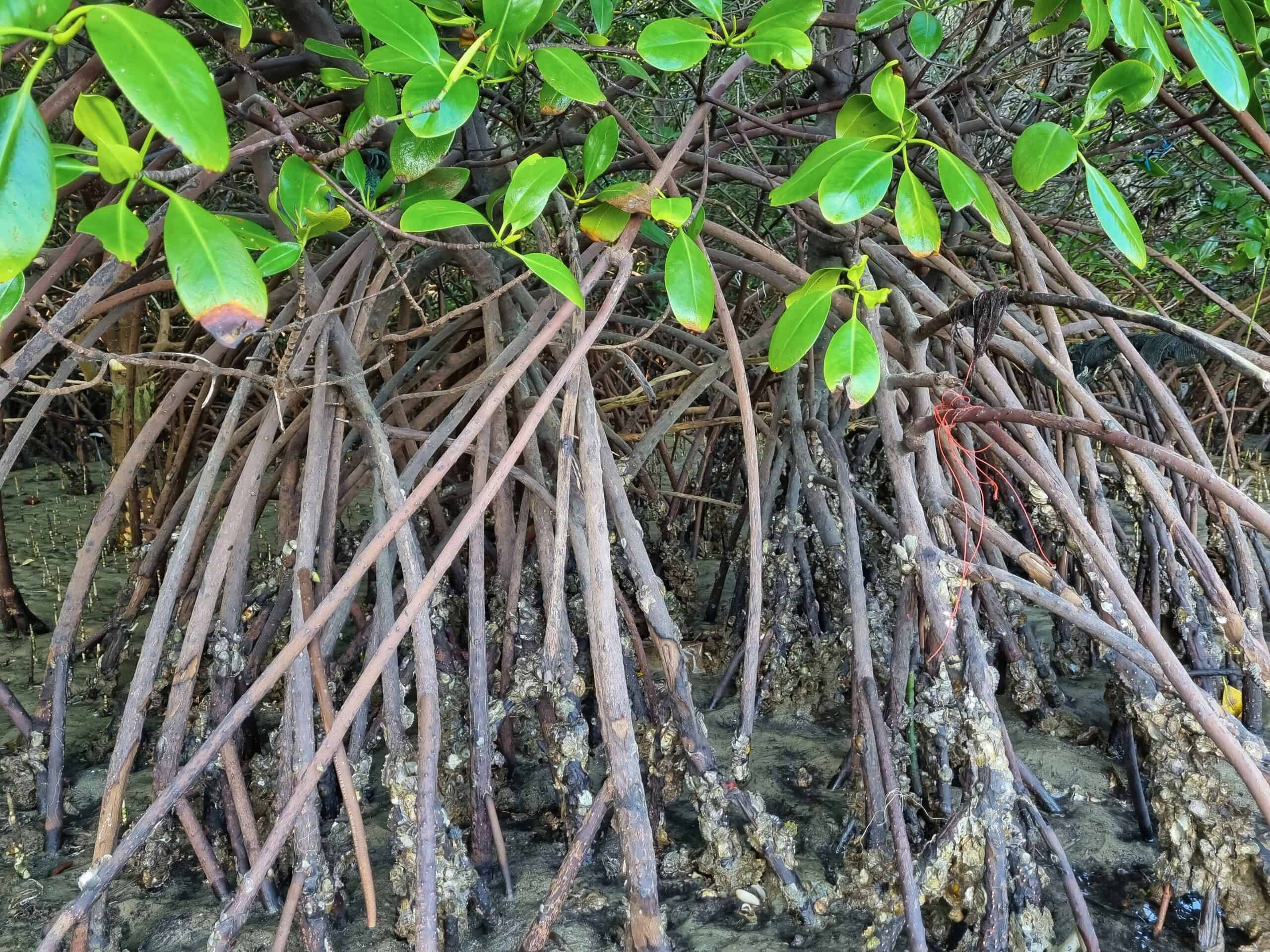
Mangroves are a group of trees and shrubs that thrive in coastal intertidal zones, where they are exposed to the harsh conditions of saline water, tidal fluctuations, and oxygen-poor soils. One of the most distinctive features of mangroves is their specialized root system, which includes stilt roots, pneumatophores (breathing roots), and buttress roots that provide stability in the soft, shifting sediments and allow the plants to absorb oxygen from the air. These adaptations enable mangroves to survive in environments where few other plants can, making them incredibly unique. Mangroves play a critical role in coastal ecosystems by providing habitat and nursery grounds for a wide range of species, including fish, crabs, birds, and even larger animals like crocodiles. They also act as natural barriers, protecting coastlines from erosion, storm surges, and tsunamis. In addition to their ecological importance, mangroves are significant carbon sinks, capable of storing large amounts of carbon in their biomass and the surrounding sediments, which helps mitigate climate change. Despite their vital role, mangroves are under threat from deforestation, pollution, and climate change, making their conservation essential for the health of coastal ecosystems worldwide. The unique adaptations and ecological benefits of mangroves underscore their importance and the need for their protection.
Waterwheel Plant (Aldrovanda vesiculosa)
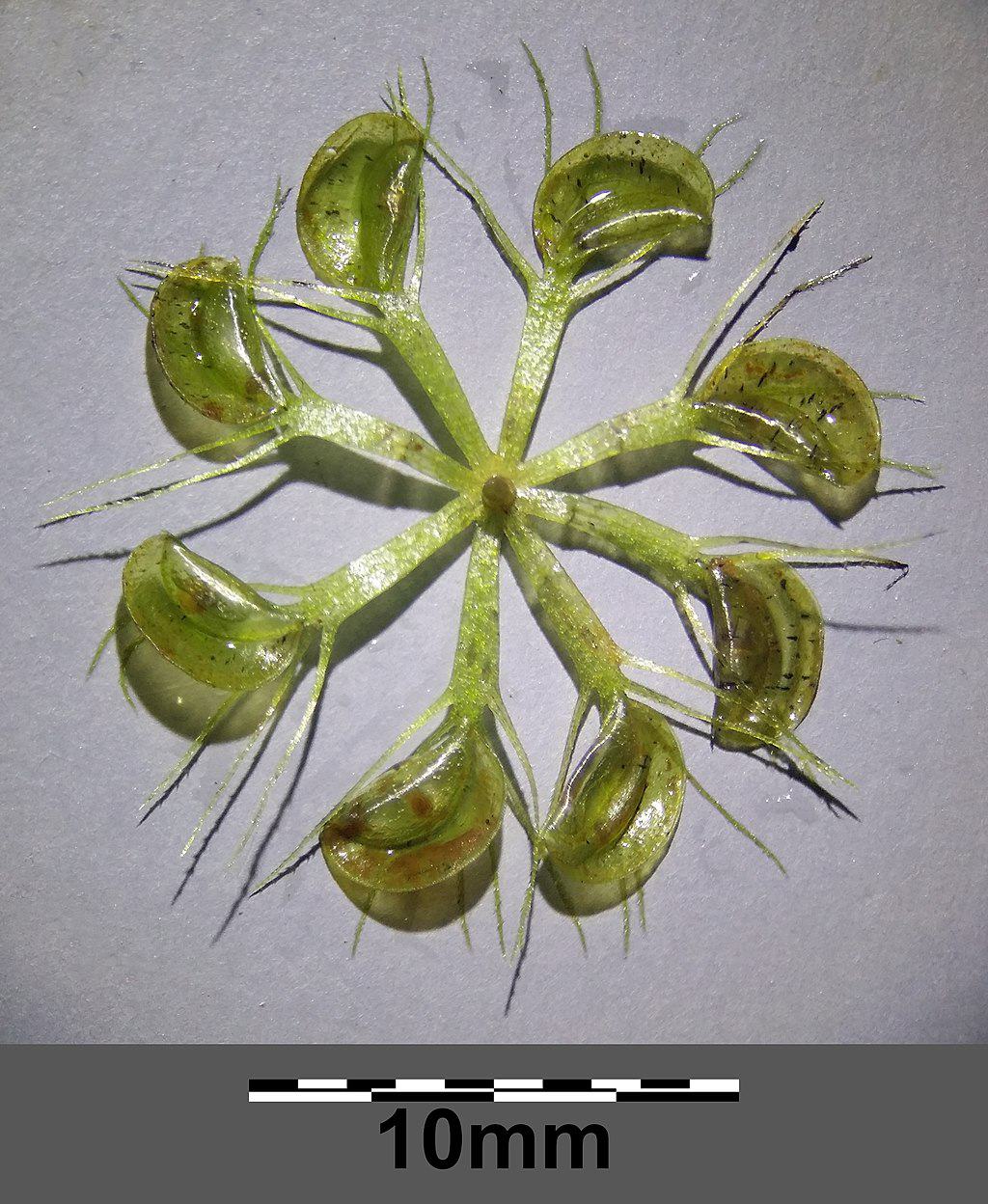
The Waterwheel Plant, Aldrovanda vesiculosa, is a fascinating and unique aquatic plant that stands out for its carnivorous nature. Unlike most aquatic plants that rely solely on photosynthesis, the Waterwheel Plant supplements its energy intake by trapping and digesting small aquatic invertebrates. This free-floating plant has no roots and derives its nutrients from the water and the prey it captures. Its circular, whorl-like leaves are equipped with tiny, snap-trap mechanisms similar to those of the Venus Flytrap, allowing it to capture prey within milliseconds. This rapid movement is one of the fastest in the plant kingdom, making the Waterwheel Plant a marvel of botanical engineering. Found in nutrient-poor, freshwater environments across Europe, Asia, Africa, and Australia, the Waterwheel Plant plays a unique role in its ecosystem by controlling populations of small aquatic organisms. However, due to habitat loss and water pollution, this species is now considered endangered in many parts of its range. The Waterwheel Plant’s extraordinary adaptations, combined with its rarity and ecological importance, make it one of the most unique and intriguing aquatic plants that flourish underwater, deserving of conservation and further study.
Java Moss (Taxiphyllum Barbieri)
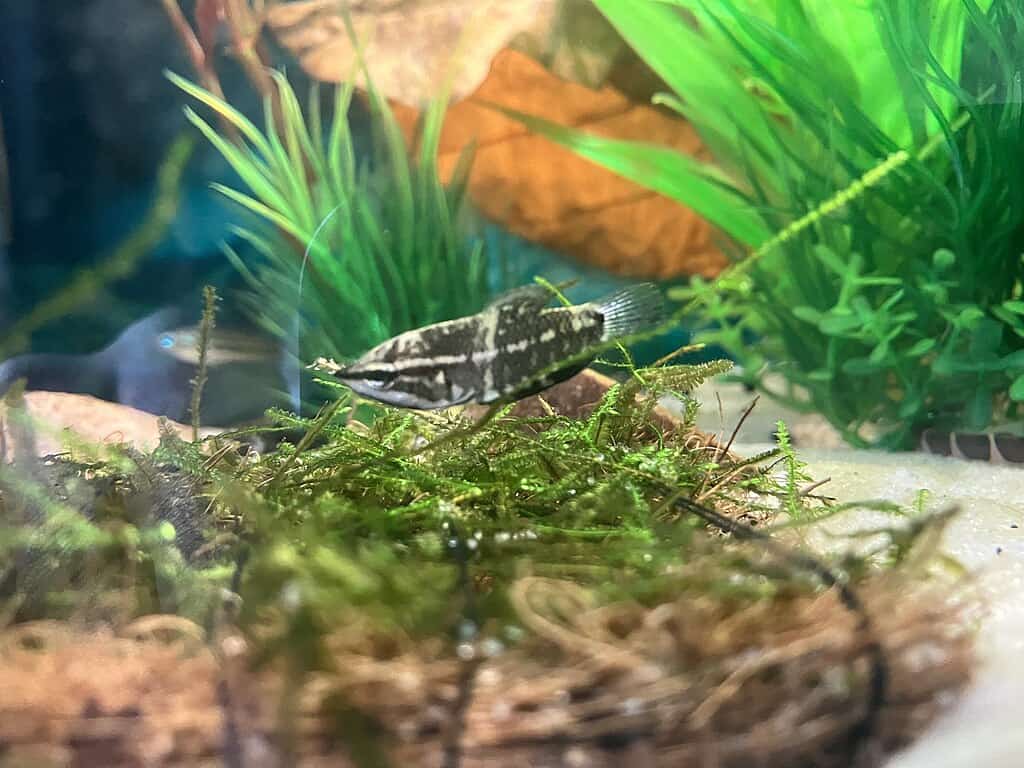
Java Moss, scientifically known as Taxiphyllum Barbieri, is a versatile and hardy aquatic plant that has become a favorite among aquarium enthusiasts worldwide. Native to Southeast Asia, Java Moss is well-known for its ability to thrive in a variety of water conditions, from low to high light and across a wide range of temperatures. This resilience makes it an ideal plant for beginners in the aquarium hobby. Java Moss has a dense, bushy appearance with small, bright green leaves that attach themselves to rocks, driftwood, and other surfaces in the aquarium, creating a natural and lush underwater landscape. One of the most unique features of Java Moss is its ability to provide shelter for small aquatic creatures, such as shrimp and fry (baby fish), making it a crucial component of breeding tanks. Additionally, it helps improve water quality by absorbing excess nutrients and providing oxygen through photosynthesis. Java Moss can grow in both submerged and emersed conditions, further showcasing its adaptability. Its aesthetic appeal, combined with its low maintenance requirements and ecological benefits, makes Java Moss one of the most unique and valuable aquatic plants for both natural habitats and aquariums.
Cryptocoryne Wendtii
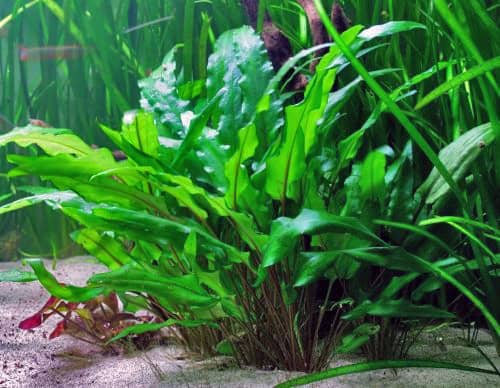
Cryptocoryne Wendtii is a popular and hardy aquatic plant known for its adaptability and the unique, varied appearance of its leaves. Native to Sri Lanka, this plant is often referred to as “Wendt’s Water Trumpet” due to the distinctive, trumpet-shaped leaves it can develop under certain conditions. What makes Cryptocoryne Wendtii particularly unique is its ability to adapt to a wide range of lighting and water conditions. In high light, the plant tends to grow more compact and develops a bronze or red hue, while in low light, it elongates and turns green. This adaptability allows it to thrive in various aquarium settings, from low-tech tanks to more sophisticated setups. Cryptocoryne Wendtii is also known for its tolerance to different water chemistries, including variations in pH and hardness, making it an excellent choice for both beginner and experienced aquarists. The plant’s moderate growth rate and attractive, crinkled leaves make it a beautiful addition to any aquarium, providing a natural, textured look that complements a wide range of aquascaping styles. Its ease of care, combined with its visual appeal and resilience, makes Cryptocoryne Wendtii a unique and valuable aquatic plant.
Alternanthera Reineckii “Mini”
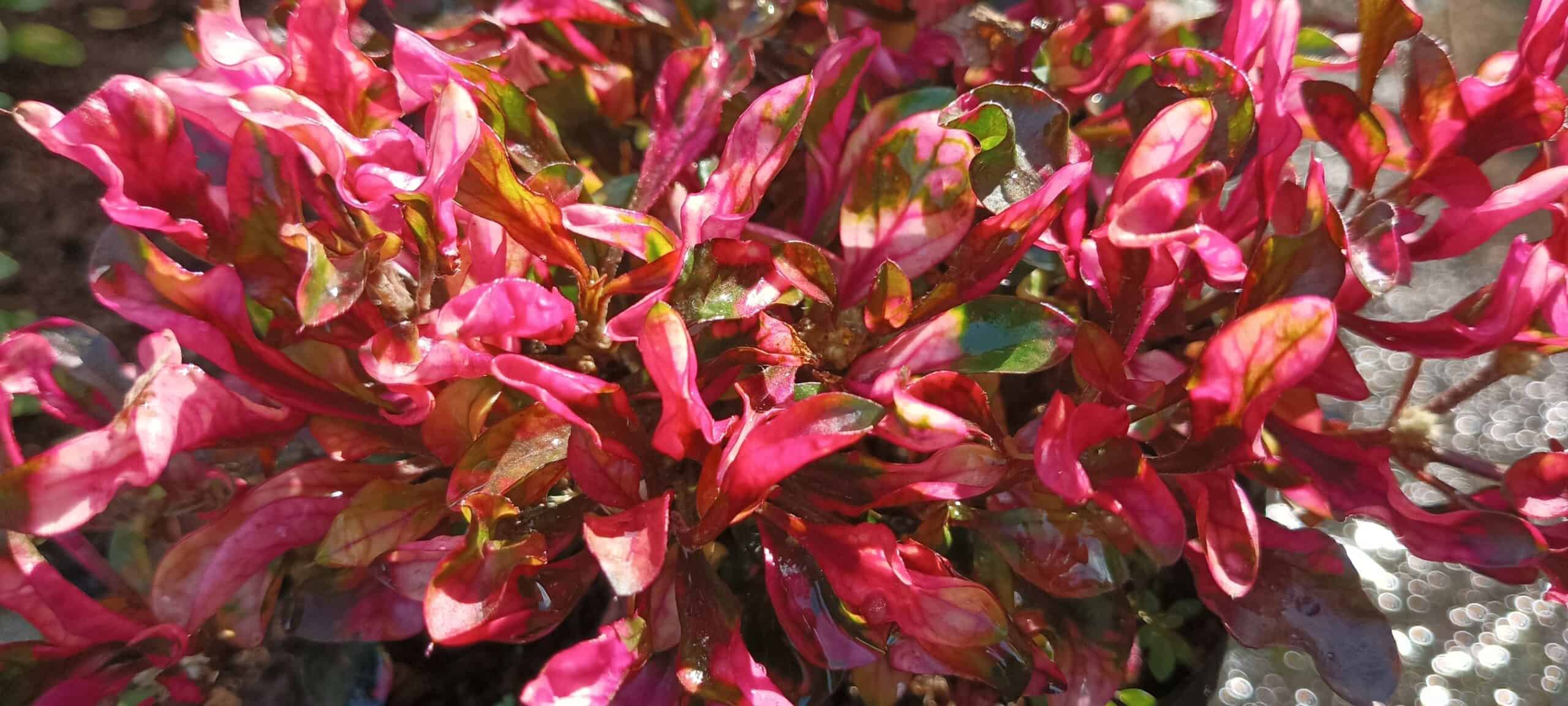
Alternanthera Reineckii “Mini” is a striking aquatic plant known for its vibrant red coloration and compact growth habit, making it a popular choice for aquascaping enthusiasts looking to add a splash of color to their aquariums. This miniature variety of Alternanthera Reineckii is particularly unique due to its small size, with leaves that grow close to the substrate, creating a dense, carpet-like effect. Native to South America, Alternanthera Reineckii “Mini” thrives in well-lit, nutrient-rich environments and benefits from the addition of CO2 to promote healthy growth and maintain its vivid red coloration. Its slow to moderate growth rate allows aquarists to maintain its shape with minimal trimming, making it ideal for foreground or midground placement in planted tanks. The plant’s striking red leaves contrast beautifully with the green foliage of other aquatic plants, adding depth and visual interest to any aquascape. Additionally, Alternanthera Reineckii “Mini” helps improve water quality by absorbing nutrients and producing oxygen through photosynthesis. Its combination of eye-catching color, compact growth, and ease of maintenance makes Alternanthera Reineckii “Mini” a unique and valuable addition to any freshwater aquarium.
Bacopa Caroliniana
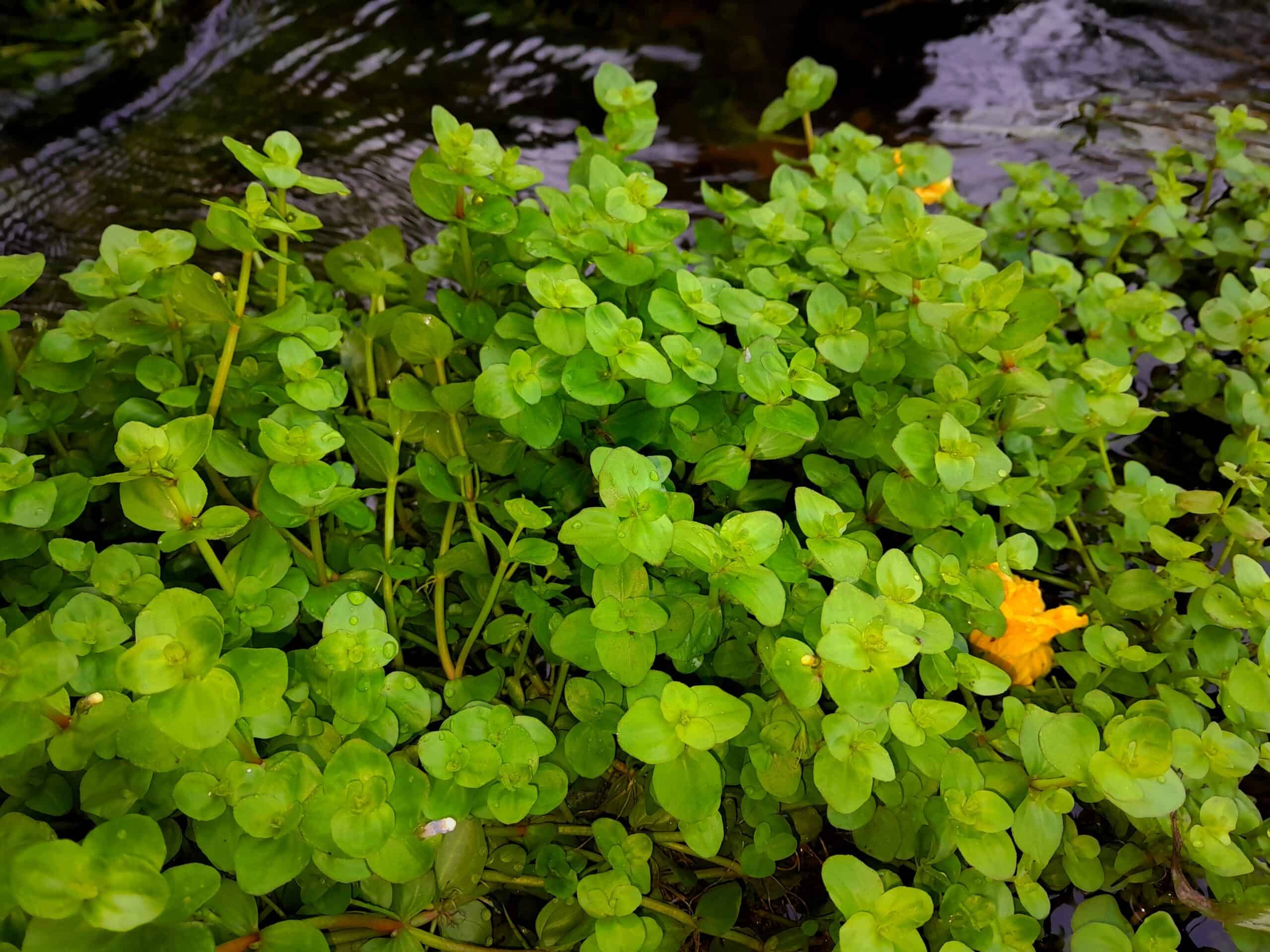
Bacopa Caroliniana is a hardy and versatile aquatic plant that has long been favored by aquarists for its ease of care and attractive appearance. Native to the southeastern United States, Bacopa Caroliniana is characterized by its thick, succulent-like leaves that grow in opposite pairs along the stem. These leaves can vary in color from bright green to a more golden hue, depending on the lighting conditions, with high light levels often bringing out a reddish or bronze tint. One of the most unique aspects of Bacopa Caroliniana is its ability to grow both submerged and emersed, making it a versatile choice for a variety of aquarium setups. In addition to its adaptability, Bacopa Caroliniana is known for its slow growth rate, which allows aquarists to create well-structured, long-lasting aquascapes with minimal maintenance. This plant is also prized for its subtle, lemony scent, which is released when the leaves are crushed or trimmed. Bacopa Caroliniana’s ability to thrive in a range of water conditions, along with its appealing, bushy growth habit and pleasant fragrance, make it a unique and valuable addition to any freshwater aquarium. Whether used as a background plant or as part of a mixed planting, Bacopa Caroliniana offers both beauty and utility.
Micranthemum Tweediei “Monte Carlo”
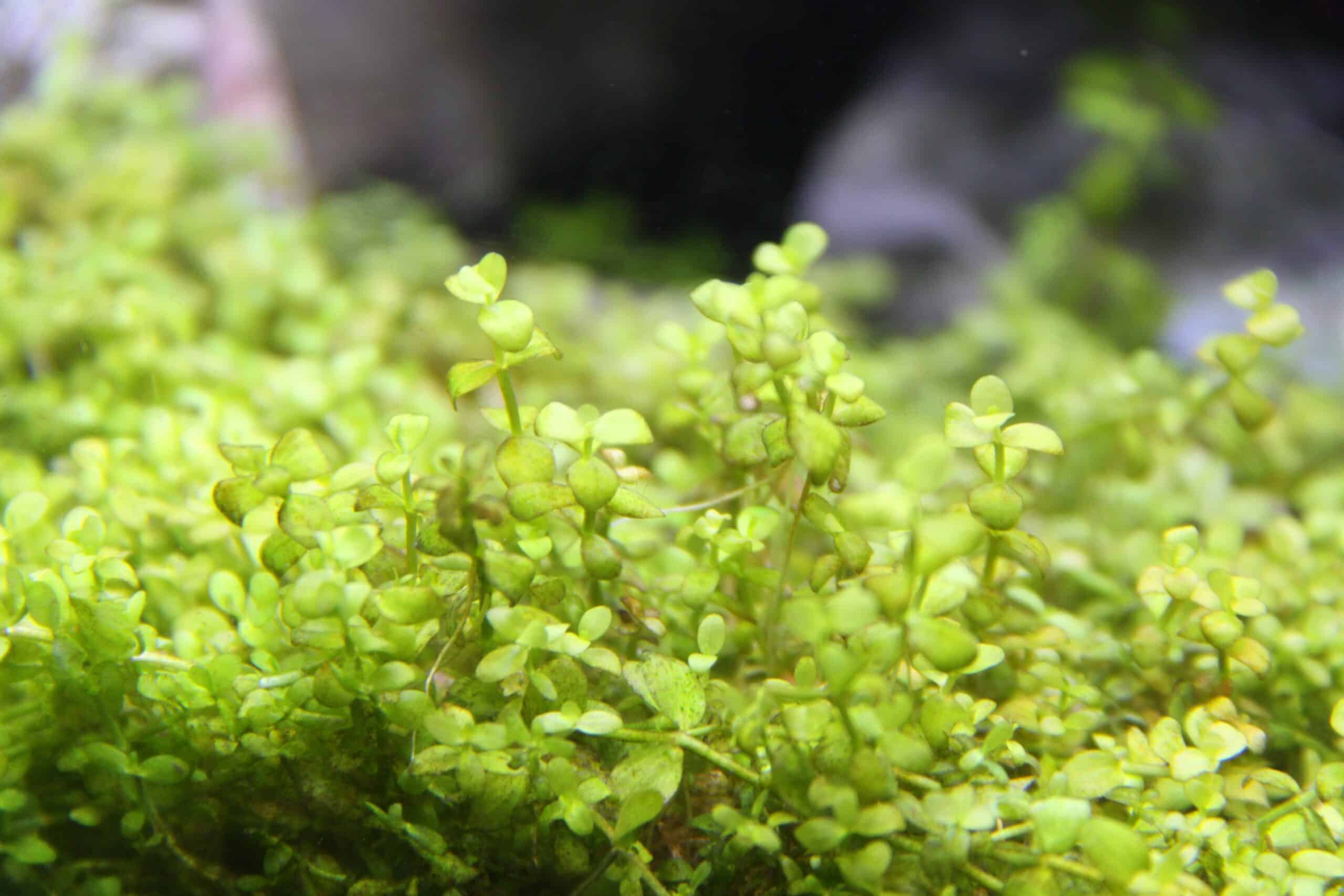
Micranthemum Tweediei “Monte Carlo,” commonly known simply as Monte Carlo, is a popular ground-cover plant that is highly valued for its ability to create a lush, carpet-like effect on the substrate of freshwater aquariums. This plant, native to Argentina, is characterized by its small, round leaves that grow densely along creeping stems. Monte Carlo is often compared to other popular carpeting plants like Hemianthus Callitrichoides (Dwarf Baby Tears), but it is generally considered easier to grow, making it a preferred choice for both beginners and experienced aquarists. One of the most unique aspects of Monte Carlo is its adaptability to different lighting conditions; while it thrives in medium to high light, it can also tolerate lower light levels, though its growth may be slower and less compact in such conditions. Monte Carlo is also relatively undemanding in terms of nutrient requirements, although it benefits from the addition of CO2 and regular fertilization to maintain healthy growth. Its ability to spread quickly and form a dense, green carpet across the aquarium floor makes Monte Carlo an excellent choice for creating natural, vibrant aquascapes. The plant’s resilience, combined with its aesthetic appeal, makes Micranthemum Tweediei “Monte Carlo” one of the most unique and versatile aquatic plants available for aquarium enthusiasts.
Hemianthus Callitrichoides ‘Cuba’

Hemianthus Callitrichoides ‘Cuba,’ often referred to as Dwarf Baby Tears, is one of the smallest and most delicate aquatic plants used in freshwater aquascaping. Native to Cuba, this plant is highly sought after for its ability to create a dense, bright green carpet on the aquarium substrate. The tiny, rounded leaves of ‘Cuba’ grow closely together, forming a lush, cushion-like effect that adds a soft, natural appearance to the tank. Despite its beauty, ‘Cuba’ is known for being somewhat challenging to grow, particularly because it requires high light levels, a stable supply of CO2, and consistent water parameters to thrive. Its small size and fine root system make it best suited for aquarists with some experience in maintaining high-tech planted tanks. The plant’s slow growth rate means that it requires regular trimming to prevent the lower layers from dying off, but the effort is well worth it for the stunning visual effect it creates. ‘Cuba’ is often used as a foreground plant in aquascapes, where its vibrant green color and compact growth can highlight and contrast with taller plants. Hemianthus Callitrichoides ‘Cuba’ is a unique and rewarding plant for those willing to meet its care requirements, offering one of the most visually striking carpet effects in the world of aquascaping.
This article originally appeared on Rarest.org.
More from Rarest.org
When it comes to luxurious vacations, nothing is too extravagant. From private islands to exclusive safaris, these experiences redefine indulgence. Read more.

Collecting coins is a hobby that often brings history, art, and finance together in fascinating ways. However, not all coins are created equal, and some have stirred significant controversy over the years. Read more.
Recording studios rely on high-quality vocal microphones to capture the nuances of a singer’s voice. Among the countless options, a few mics have become legendary for their exceptional performance and versatility. Read more.


